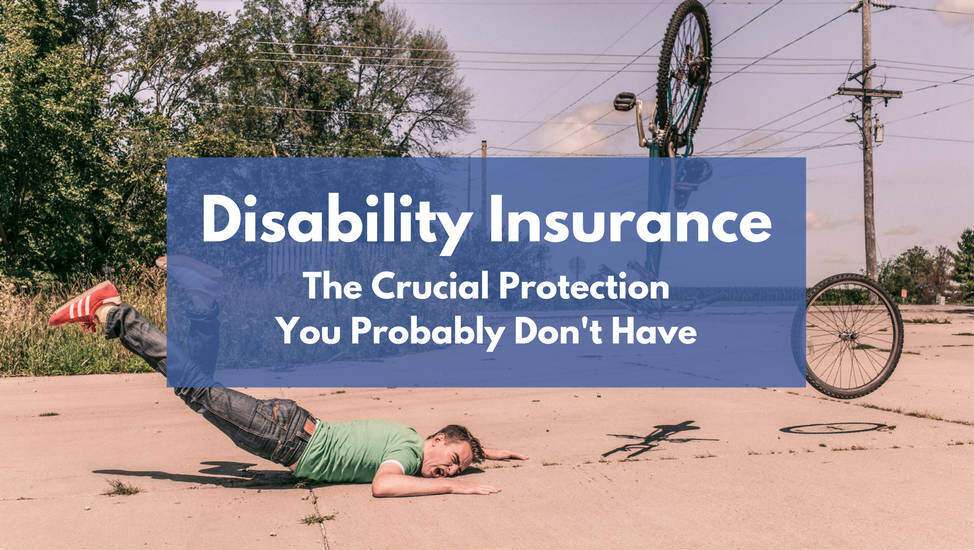Most people know that long-term disability insurance is income protection for when you cannot work for a long period of time. The only problem is that they just don’t know how long. Well, this is imperative to know, but kind of hard to answer because it can vary. Some plans offer coverage for months, some for years, and some might even offer coverage for decades. Long-term disability is much different than that of life insurance or auto insurance, as these policies typically only pay one lump sum. That’s not the case with the long-term policy. Long-term will pay out an agreed-upon amount over a long period of time. The payment period can also vary depending on your policy or provider. Once again, some offer protection for years, whereas some offer for decades. Confusing enough?
How The Benefits Work
When you are signing up for long-term disability insurance there will be a lot of things that need to be considered. However, there will be two more things that are much more important than the other factors. This would be the length of your elimination period as well as the length of your benefit period. The elimination period is pretty much how long you have to wait before the coverage kicks in and this is why it is oftentimes referred to as the waiting period. Waiting periods can be set for 30 days, 60 days, 90 days, 6 months, or even a year. Just know that the longer you wait for the policy to kick in, the cheaper your premiums will be. However, this means that you have to go longer without a paycheck.
The benefit period will obviously be the length in which your benefits are paid out. How long do you want to keep receiving compensation from the insurance provider? These plans are usually available in increments of two years, five years, ten years, or until retirement. You’ll have to base both of these decisions on your specific financial needs as well as with what you can afford.
The Elimination Period
As you just learned, your benefits won’t kick in right away. In fact, you will be the determining factor as to when they kick in. Whatever period you choose, you’ll have to wait the entire period before the benefits kick in. For instance, if you choose 6 months, you’ll have to wait 6 months before you start receiving benefits. Why is there a waiting period? The waiting period allows the insurance provider to verify that you are indeed disabled and not just making a false claim. It also helps make sure that your long-term and short-term plans don’t overlap.
In Canada, most people usually just opt for an elimination period of 30 days to a year, but as you learned above, there are different time periods available. Your specific elimination period will depend on you and your specific needs. Determining when you want your benefits to kick in really comes down to your financial needs and how much you can afford to pay. The shorter the time period, the more you will pay for premiums. If you need money right away or won’t be collecting short-term disability, you’ll likely want coverage to kick in as soon as possible.
A Shorter Elimination Period
A shorter elimination period is obviously the way to go for most people. And, this is because it means they won’t have to wait as long for the benefits to kick in. This is especially true for people with a lot of expenses and bills. They’ll have the added benefit of knowing that all their financial obligations will be taken care of. Just remember that with this option, you’ll have more financial obligations now because you’ll have to pay higher premiums.
A Longer Elimination Period
A longer elimination period means that you’ll be going a longer time before your benefits kick in. This is a good option for someone that doesn’t have as many expenses or someone that is receiving adequate short-term coverage. The right is to find the right balance of payments versus elimination period length. That being said, the most effective way to go is to opt for a plan that will kick in within 90 days. However, one thing to keep in mind is that when collecting, long-term benefits usually won’t pay out until the very end of the month. This virtually means that you might be adding an additional 30 days to your elimination period.
Getting By With A Longer Elimination Period
A lot of people find themselves in a situation where they need disability coverage as soon as possible but just can opt for it because they can’t afford the extra charge on the premiums. Given that earlier elimination will add to the premiums quite a bit, this makes sense. Luckily, there are options out there available to you. First, you could start with credit cards. Short-term disability is also another option. Remember this is something that is usually offered through your employer and it’ll likely cover you until your long-term kicks in. This will be another premium that you’ll have to worry about, but you might find that it is much cheaper than the extra added premiums for shorter elimination periods.
Some other options available to you are loans, budget cuts, friends, and family. If you can cut costs in any area, you’ll want to cut them as soon as possible. For instance, if you can cancel a phone plan or lower it, go ahead and do it. Whatever the situation is, just remember that whatever you are doing to supplement your income will likely be temporary and repayment will be required. You don’t want to put yourself in a situation where you borrow so much money that you have a hard time paying it back.
Choosing The Benefit Period
You’re also going to have to decide how long you’ll need coverage. This is something that will likely be decided after the elimination period and perhaps, much more important. This decision will make sure that you keep receiving coverage for as long as you need it. Most long-term plans come available in options of two, five, ten years, or retirement. Most people in Canada go with the five-year option, as it is usually enough to cover.
However, since the five years is enough to cover most people, the cost of long-term disability insurance isn’t much higher for longer benefit periods. That pretty much means, applying for a policy that offers long protection won’t cost you that much extra money each month. In addition to this, you’ll have the peace of mind knowing that you’re going to be covered in the event that you are unable to return to work.
Types of Disability Insurance we offer
- Long-Term Disability Insurance (LTD)
- Short-Term Disability Insurance
- Key Person Disability Insurance
- Self Employed Disability Insurance
- Mortgage Disability Insurance
- Temporary Disability Insurance
- Supplemental Disability Insurance
Other Disability Insurance Resources that you can read
- Are Canadian Disability Insurance Premiums Tax-Deductible?
- Will My Long-Term Disability Income Be Taxable?
- Dealing With Elimination Periods For Short And Long-Term Disability Insurance
- Pregnancy And Disability Insurance
- Who Pays For Disability Insurance?
- Why Employers Offer Disability Insurance
- Maternity Leave And Disability Insurance Benefits
- How Long Do Long-Term Disability Benefits Pay?
- How Much Does Long-Term Disability Insurance Cost?
- Is Disability Insurance Worth It?
- How Much Disability Insurance Should I Get?
- What Does Disability Insurance Cover?
- What To Look For In Disability Insurance?
- Do I Need Disability Insurance After I Retire?
- Does Disability Insurance Cover Pre-Existing Conditions?
- How Does Disability Insurance Work?
- How Long Does Long Term Disability Insurance Pay?
- Is Wage Loss Insurance The Same As Short Term Disability?
- When Does Long Term Disability Insurance Start?
- Can You Buy Your Own Short Term Disability Insurance?
- Can You Get Disability Insurance If You Are Unemployed?
- Can I Buy My Own Short-Term Disability Insurance?
- Can You Get Individual Short Term Disability Insurance?
- Are Credit Cardholders Insured By Disability Insurance Plans?

